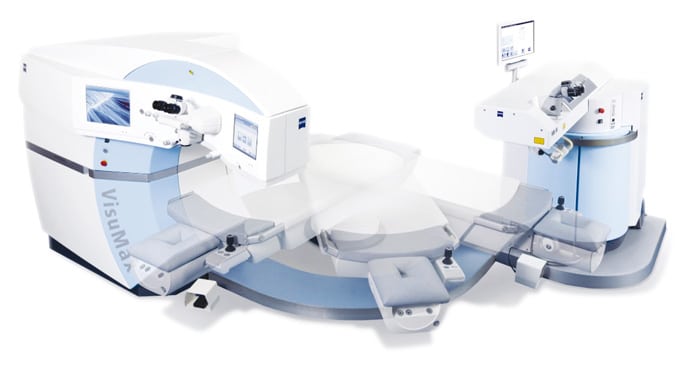1/ Definition

Myopia
Focusing of light
in front of the retina
2/ LASIK (Laser Assisted In Situ Keratomileusis)
LASIK is a mixed technique combining two lasers, a femtosecond laser followed by an excimer laser.
3/ PRK (Photo Refractive Keratectomy)
The procedure is quite the same but instead of creating a flap inside the cornea, the excimer beam energy is delivered on top of the corneal surface after its superficial layer (epithelium) has been peeled.
4/ EPILASIK
This technique combines surgery and excimer laser, and is meant to cure stronger forms of myopia which cannot be treated by LASIK. The corneal flap is thinner than with that which is needed for LASIK surgery. This technique, intended for thin corneas, is in fact very close to PRK in terms of the procedure itself and of the delay of visual recovery.
5/ SMILE (Small Incision Lenticule Extraction)
SMILE is an alternative to LASIK to cure myopia of 4 to 10 diopters and is specifically recommended for patients with thinner corneas or for those practicing combat sports such as boxing.
The surgical procedure is performed with a femtosecond Visumax® laser developed by Carl Zeiss Meditec®. The surgeon applies the laser beam twice, with each application being separated by a thickness proportional to the desired refractive effect. The corneal stroma is thus cut and manually extracted through an incision of 3.5 to 4mm. This technique requires a certain surgical skill.

6/ INTRA OCULAR LENSES
High-degree myopia can be treated with the use of intraocular implants. The procedure consists in placing an additional lens either inside the eye in front of the human lens in order to correct the refractive error. The power of the implant is chosen based on the desired correction, and the accuracy of the result is excellent. Both the size and power of the implant are determined on a customized basis, depending on the preoperative measurements.
The procedure is performed under local anaesthesia (by drops) in an outpatient facility, and rarely exceeds one hour for both eyes. The visual recovery is very fast, as LASIK, rarely exceeding 24 hours, and allows the patient to resume a normal life the day after surgery. The advantage of this technique is also its reversibility, along with the possibility of resorting, if required, to another type of surgery several years down the road.
Myopia: images
Video
Pre and post-operative topographies
Pre-operative topographie

Post-operative topographie

